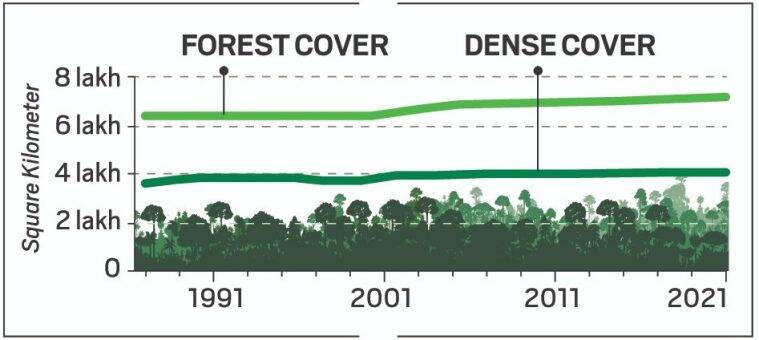7667766266
enquiry@shankarias.in
India’s target of increasing its forest and tree cover absorb an additional amount of 2.5 billion to 3 billion tonnes of carbon dioxide equivalent by 2030 is a relatively difficult one to achieve.

